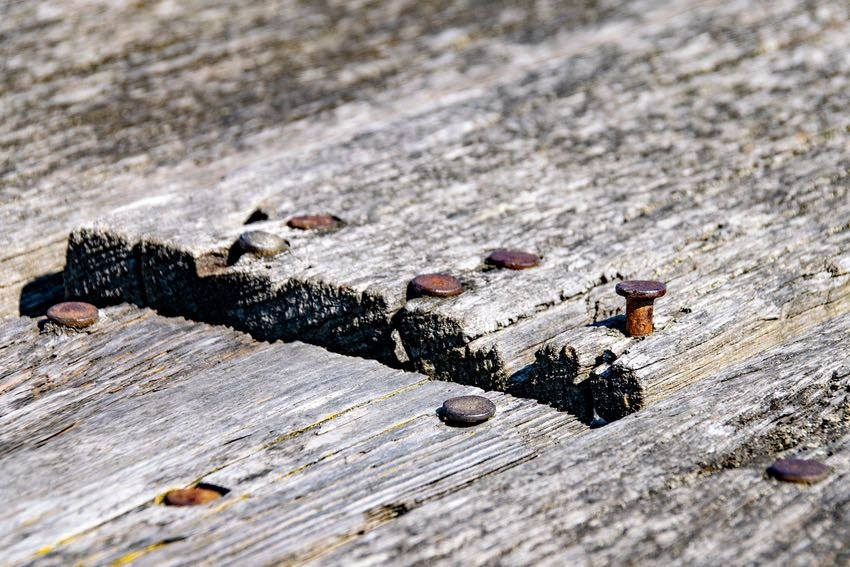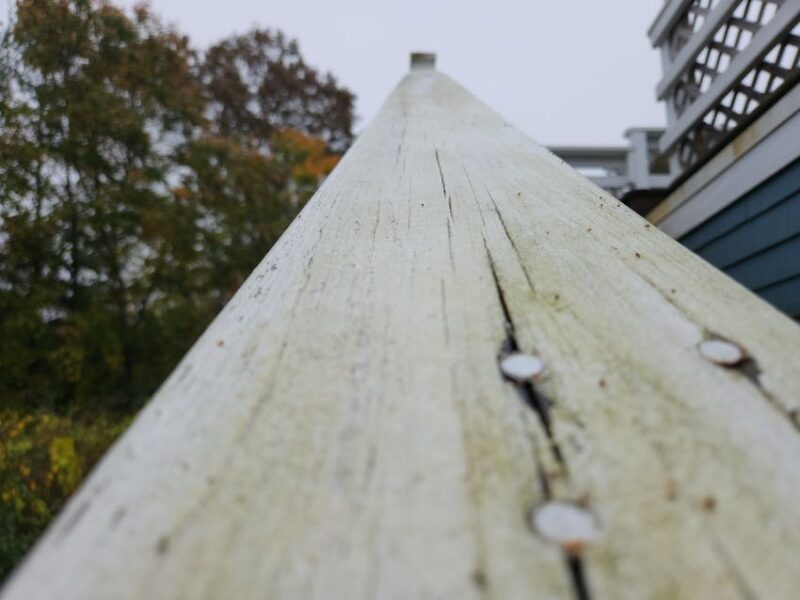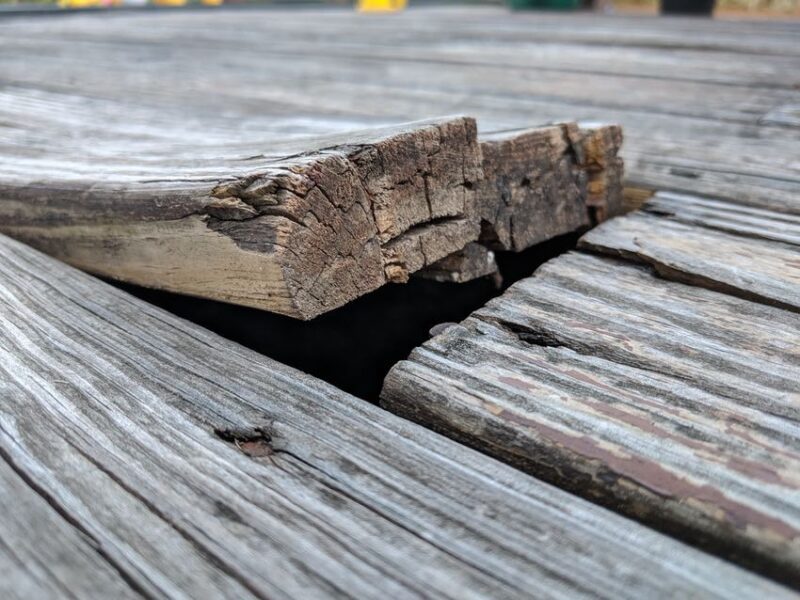
Understanding the right type of nails to use with pressure-treated wood is crucial for the longevity and safety of your construction projects. Pressure-treated wood, often used in outdoor settings, is treated with chemicals to resist rot and insects. While not as robust as before they removed arsenic and other chemicals—today’s PT still corrodes certain types of nails and fasteners. This leads to potential structural instability over time. We cannot stress enough the importance of using the right nails for pressure-treated wood so you get the best results.
Let’s start at the top.
What are Galvanized Nails?
Galvanized nails are a type of nail that has undergone a specific process known as galvanization. This process involves coating the nails with a protective layer of zinc to prevent rust and corrosion. The zinc acts as a sacrificial anode, meaning it corrodes before the underlying metal. This prolongs the life of the nail. Galvanized nails come in different types. You can purchase hot-dipped galvanized nails, electrogalvanized nails, and mechanically galvanized nails. Each includes varying degrees of protection.
Electrogalvanized vs Hot-Dipped vs Mechanically-Galvanized
While electrogalvanized nails, mechanically-galvanized nails, and hot-dipped galvanized nails undergo a process of galvanization, they differ in the amount of protection they offer. The main difference lies in the thickness of the zinc coating and the application process. Of the three, hot galvanized nails typically provide the most protection against corrosion.
Hot-Dipped Galvanized Nails (Best for Pressure-treated Wood)
Hot-dipped galvanized nails are dipped in molten zinc. This results in a thick, irregular coating that provides excellent corrosion resistance. It also gives these nails excellent grip in lumber, though not as good as ring-shank nails.
Mechanically-Galvanized Nails (Second Best for Pressure-treated Wood)
Mechanically galvanized nails undergo a specific process that involves placing the nails in a rotating drum filled with zinc dust and glass particles. The resulting friction and impact cause the zinc to adhere to the nails, forming a protective layer.
This protective layer acts as a shield, preventing the steel of the nail from coming into contact with moisture and oxygen, which can lead to rust and corrosion.
Electro-Galvanized Nails
Finally, we have electrogalvanized nails. These use a process called electroplating that results in a thinner, smoother layer of zinc. The nails go through a series of cleansing baths to eliminate any impurities such as dirt, oil, or oxidation. Next, the manufacturer immerses the nails in a solution of water and zinc salts. Finally, they introduce an electric current into the solution. This current triggers a reaction, reducing and settling the zinc ions in the solution onto the nails.
The electrogalvanization process yields a uniform and smooth zinc coating on the nails. However, this coating is usually thinner compared to the coating produced by hot-dipped or mechanical galvanization. Consequently, while electrogalvanized nails offer some level of corrosion resistance, they may be the best for pressure-treated wood in harsher outdoor conditions.
Can You Use Galvanized Nails in Pressure-Treated Lumber?
As mentioned above, galvanized nails provide excellent protection when used with pressure-treated lumber. The thick zinc coating on these nails provides a high level of corrosion resistance. This makes them perfect to resist the harsh chemicals found in pressure-treated wood. As noted above, however, not all galvanized nails are created equal. Some may not offer enough protection for areas prone to saltwater or similar applications.

What Happens When You Use Untreated Nails in PT?
When you use standard, untreated nails in pressure-treated lumber, you can run into several problems. Nothing happens right away, of course. Eventually, however, you can incur several serious issues. The same harsh chemicals that help PT wood resist decay and pests can have a corrosive effect on certain metals. That includes standard bright (“Brite”) steel or smooth construction nails. Some issues you might run into when using untreated nails:
Metal Degradation
The most prominent issue that arises is metal degradation. The chemicals present in pressure-treated wood can instigate a reaction with the metal in the nails, leading to corrosion or rust over time. This corrosion process can compromise the strength of the nails, diminishing their ability to hold structures together and potentially leading to instability.
Discoloration
Another problem associated with corroded nails is discoloration of the wood. As the nails undergo rusting, they can leave behind dark, unattractive stains that can mar the aesthetic appeal of your project.
Structural Breakdown
In extreme cases, the corrosion can lead to the complete failure of the nails. This can result in structural components becoming detached or collapsing, posing a significant safety risk. This holds especially true in load-bearing structures like decks or fences when exposed to the elements over time.

Reduced Durability
In general, using standard nails with pressure-treated wood can drastically reduce the durability of your project. You risk corrosion and potential structural breakdown. That means more frequent maintenance or replacements than if you used more suitable nails.
For all these reasons, we advise the use of galvanized (or stainless steel) nails when working with pressure-treated wood. These coated nails best resist the corrosive effects of the chemicals in the wood. This ensures a more durable and reliable long-term result for your projects.
What are the Best Nails for Pneumatic Nailers When Nailing into Pressure-Treated Wood?
When using a pneumatic nailer for pressure-treated wood, it’s important to choose nails that offer high corrosion resistance. Stainless steel nails might present the best choice for this application. Most don’t even know they exist. They do cost a lot more than galvanized, but if you absolutely need the best nails for an application near seawater, go with stainless. Stainless steel collated nails offer superior corrosion resistance and are strong enough to withstand the forces applied by a framing nailer.
If you don’t quite need the quality offered by stainless steel collated nails, hot-dipped galvanized nails rank a great second-best alternative. Electrogalvanized nails appear third on the list. While adequate, they offer the least amount of long-term protection for pressure-treated wood applications.
Wrapping It Up
In conclusion, the type of nails you use with pressure-treated wood can significantly impact the durability and safety of your construction projects. Galvanized nails, particularly hot-dipped galvanized nails, are often the best choice due to their high corrosion resistance. However, it’s important to consider the specific requirements of your project and choose the nails that offer the best combination of performance, durability, and cost.






